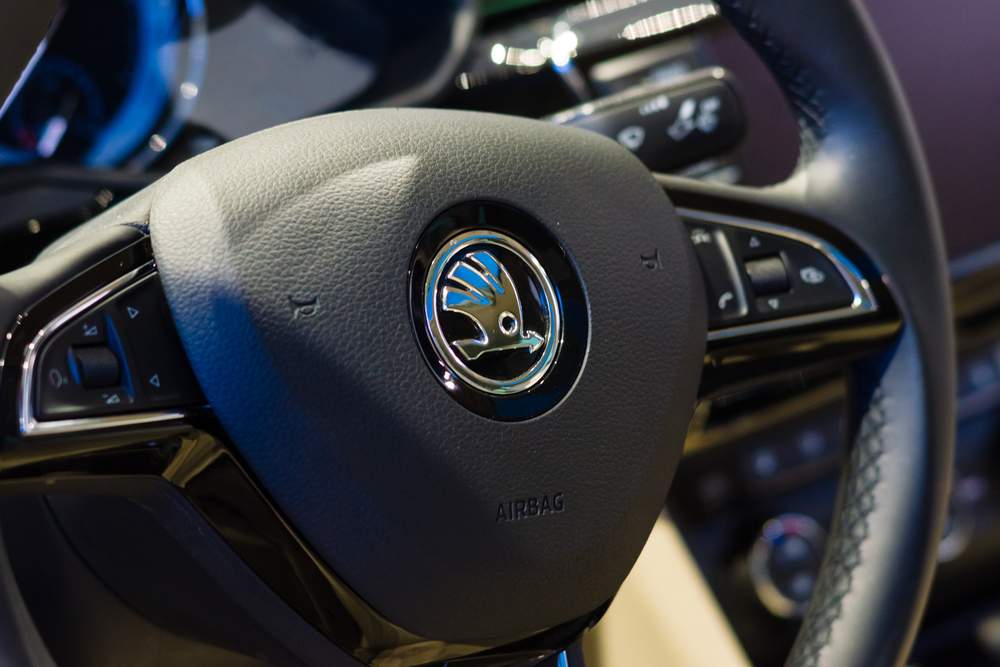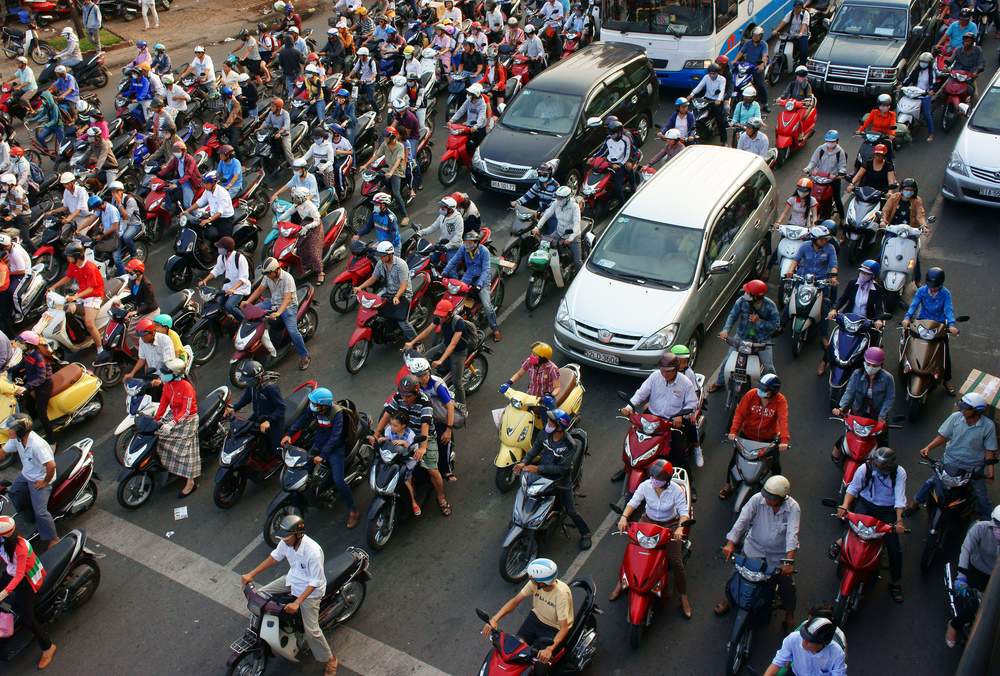Whether it’s a road trip across North America or a camper van around New Zealand, traveling by car can be a wonderful adventure. There is nothing quite like the freedom of the open road and being the master of your own timetable.
The only problem is that where you’re going they drive on the ‘wrong’ side of the road.
Whether you’re going from right to left or left to right, driving on the other side of the road can be daunting. Not only is the traffic coming at you from unexpected directions, but the inside of the car has an unfamiliar layout as well. Not to worry, though. Below you’ll find some tips and tricks to make the experience easier, smoother and less stressful.
“There is nothing quite like the freedom of the open road and being the master of your own timetable.”
Even before you leave home, there are some important things you can do to get yourself ready. If you’ve decided to rent, buy or borrow a car, there’s a certain amount of research you need to do.
First of all, what side of the road do they drive on in your destination country? It might be worth double-checking, just to be sure. This website provides a list of which countries drive on which side, as well as some history on the subject.
License & Insurance Requirements

The next thing you want to look into is insurance, particularly if you’re renting. Check with your credit card provider and with your personal car insurance company; it’s possible you may already have some coverage. Be sure to check that the insurance they offer is valid in the country to which you’re traveling, and check how comprehensive the coverage is. Make careful note of any exceptions or exclusions.
Many car rental companies will automatically include insurance coverage as part of the rental charge, so if you plan to go with your existing insurance, you will likely need to make your booking over the phone and you will need to bring proof of your coverage. (Also note, if you’re using the coverage from your personal car insurance, a claim on the rental may affect your personal car insurance rates. And, if you’re using the coverage from your credit card, you should put the entire cost of the car rental on that card.)
“When I find myself driving on the ‘wrong’ side of the road, I usually opt for this additional coverage, just for my own peace of mind.”
The basic insurance you will get with your rental can still leave you responsible for an “excess,” in case of theft or damage, which can run into the hundreds or thousands of dollars. The rental agencies usually also offer additional coverage which will reduce or eliminate that excess entirely. When I find myself driving on the ‘wrong’ side of the road, I usually opt for this additional coverage, just for my own peace of mind.
You will also want to look into whether your driver’s license will be valid in your destination country. Car rental agencies should be able to answer this question for you if you give them a call. Otherwise, you can look into getting an International Driving Permit. This is a document, recognized by a long list of countries (found here), which basically translates your existing driver’s license into multiple languages and alphabets. Take note, though, that it’s not valid on its own – you must use it in conjunction with your existing license.
Research the Car You’ll be Driving

In addition to all this, you should also do some research to learn as much as you can about the car you will be driving. If you’ve arranged to borrow a car from your cousin Phil or your friend Bob then you’ve got it easy. One phone call can get you the make and model of the car you’ll be driving, whether it’s a standard or an automatic, and any little quirks the car might have.
If you’re renting or buying it’s not so straightforward. You may not know which car you’re getting until they hand you the keys. There are things you can do, though.
“Are their cars automatic or standard shift? Do you have the choice?”
If you’re renting, go through the rental agency website or give them a call. Are their cars automatic or standard shift? Do you have the choice? Is there a specific make or model that you’re likely to end up with? Are there any details the company feels you should know?
If you’re buying, check the dealerships or the online listings or the auctions. Get an idea for the kind of cars that come available, with an eye to the same questions as for a rental.
Practice, Practice, Practice

There are countries, the UK for example, where standard-shift cars are the norm. Trying to rent an automatic there can become quite expensive. If you’ve only ever driven an automatic, this can be problematic.
So, before you go, try and get your hands on a standard-shift car to get some practice in. Borrow one, rent one, take one for a test drive, whatever you need to do. It will be much easier to pick up the skill at home, while everything else is still familiar.
“A little bit of practice ahead of time to familiarize yourself with the feeling can be very helpful.”
The inverse is also true. If you’ve only ever driven a standard-shift car and you find yourself with an automatic. It can be quite disorienting to keep reaching for a clutch pedal that isn’t there, and not to be in control of when your car changes gear. A little bit of practice ahead of time to familiarize yourself with the feeling can be very helpful.
Make it Easier on Yourself

Most journeys begin in big cities, because that’s where the transport links are. There’s nothing that says that you have to pick your car up right away, though. It can be very stressful driving in a big city that is unfamiliar to you, fighting bad traffic and aggressive drivers. And most big cities offer transport alternatives: public buses and trains, taxis, or even getting around on foot.
” Or, you could explore the option of taking a bus or a train to the first smaller town on your itinerary and pick up the car there.”
So, think about picking up the car on your way out of town instead. That way, you can get straight out onto the open road. Or, you could explore the option of taking a bus or a train to the first smaller town on your itinerary and pick up the car there. If you’re renting and need to drop the car off at the same place you picked it up, look into making it a round trip ending in that same small town, drop off the car and then take the train back to the big city for your connection home.
Get to Know the Car Before You Hit the Road

In addition to going over the car for insurance purposes, take the opportunity to look at it from a practical point of view and ask any questions while there is a knowledgeable person around. Get in, turn the car on, check out the gear shift, move the seats around, open and close the windows, anything you can think of. (I didn’t do this my first time out and ended up sitting in the car for a full 15 minutes, trying to figure out how to put it into reverse.)
Before you venture out into the world, take a little test drive around the parking lot or around the block. Get used to having the gear shift and the parking brake on the wrong side. Make sure you know where to find your headlights, windshield wipers and horn. Find out now whether the accelerator or the brake is particularly sensitive or sluggish. You want to eliminate as many surprises as possible before you get out into traffic.
“Your driving won’t be as instinctive, so you don’t want to spend too much time fiddling with the dials and wires while you’re driving.”
For at least the first couple of hours it’s probably best to leave the music off and concentrate on the road. If you do plan on listening to music, or setting up a DVD in the back for the kids, make sure you figure out how it all works and set everything up before you go. Find the radio station, hook up the MP3 player, whatever. Your driving won’t be as instinctive, so you don’t want to spend too much time fiddling with the dials and wires while you’re driving.
Staying Safe

In an unfamiliar city or country, you want to know exactly where you’re going and how to get there before you set out. Sit down with a map (either paper or online) and plan out your route. Make sure you know at least the first sequence of turns, enough to get you onto the first highway, for example, and the name and direction of the highway you’re meant to look for next. You don’t want to be fumbling to try and read the map while you’re concentrating on the road. If you get lost or are unsure of your next turn, pull over to check the map or ask for directions.
If you’re feeling unsure in the unfamiliar car or uncomfortable on the ‘wrong’ side of the road, take it slow. Stick to the slow lane, if there is one, or pull over every so often to let the cars behind you pass. I know this can feel damaging to the ego, but don’t think of it that way. You’re there to see and experience a new country; pulling over will give you the chance to take in the scenery around you and take some photos. It really is a good thing to get your eyes off the road every so often. It will also reduce the stress of having an irritated local trying to drive up your tailpipe.
“Pay extra special attention when you’re turning corners.”
Pay extra special attention when you’re turning corners. This can be an issue even when you think you’ve adapted. I once found myself in the middle of an intersection making a turn with my brain screaming “What lane do I turn into?!” You don’t want to get caught in that position. Nor do you want to make a turn without thinking only to find yourself facing an oncoming bus. So, pay attention, look well ahead, work out before you get there which lane you should be aiming for. If you’re coming up to a roundabout, the signage will often let you know which way to turn into it. Also, keep an eye on the cars around you. Following someone else can often be a huge help.
Driving on the wrong side of the road will feel strange at first. Some things you’ll pick up right away and others you’ll have to work at. I was fine with the gear shift being on the wrong side, but couldn’t deal with the parking brake being there. I kept grabbing the door handle, as though that was going to prevent my car from rolling backwards down the hill.
“…you want to eliminate as many distractions and worries and confusions as possible ahead of time, so all you have to focus on is being on the wrong side.”
Don’t worry too much, though. It really does become natural very quickly. The tips above will be helpful, and the way to think about them is this: you want to eliminate as many distractions and worries and confusions as possible ahead of time, so all you have to focus on is being on the wrong side.





